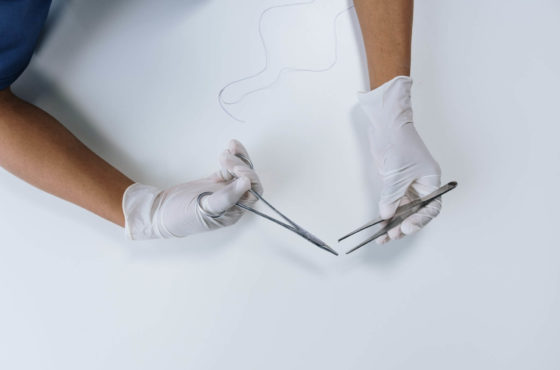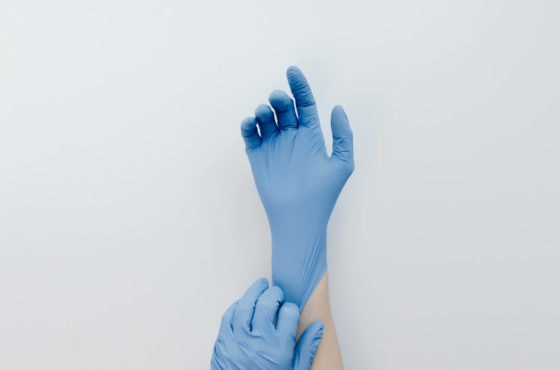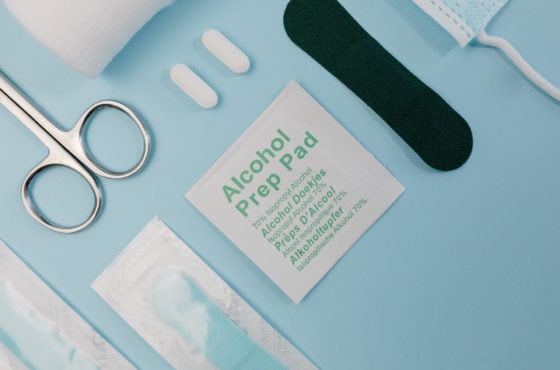When accidents take place, a cut can happen anywhere on your body.
Traditionally, a surgeon will use stitches, staples, or sutures to close the cut.
Lately, however, health care professionals prefer using surgical staples over stitches and sutures as the former is considered in some cases as a better option.
But did you know that there are lawsuits filed against the manufacturers of these medical devices?
Patients who have had surgery involving the use of staples have reported severe pain and serious injuries. According to plaintiffs who filed surgical stapler lawsuits, surgical staplers can malfunction and misfire, going deep into a patient’s organs which were not the sites for surgery, causing them pain.
If you are now resting at home after a surgery, you might be asking yourself: “Is the pain I am feeling normal, or not?”
The good news?
You have come to the right place. In this article, you will learn more about what’s a perfectly normal kind of pain and what’s not after having an operation involving surgical staples.
We will help you figure out if you need to take it easy or if you need to call your doctor immediately.
When Do Stitches Or Staples Need To Be Removed?
After a surgery, you need to look out for the wound that the doctor left behind after the procedure.
Stitches or staples are used to close several layers of the wound.
Stitches on the deeper layer of the wound will dissolve in around 2 to 3 weeks. However, removal of stitches or staples in the upper layer should be within 7 to 14 days.
Stitches in the face are usually removed after a week. But stitches or staples in the belly and back may need to stay longer, usually up to 14 days.
How Long Does It Take For Staples To Heal?
Surgical staples usually need to stay in place for a few days before they can be removed. In some cases, it can take up to 21 days.
But the question of how long your staples should really stay mainly depends on the following:
- the surgical site
- the type of surgery you had
- how severe your wound is
- healing progress of the area
It is important to note, however, that after your surgery, it is perfectly normal to see some swelling and redness, even red streaks on your wound or the area around it. But it’s always better to ask your doctor how much redness and swelling on the wound is okay.
Your wound may also feel warm and you may feel pain around the wound.
What’s not normal is when the redness, swelling, and pain do not go away or if it gets worse and becomes severe pain instead. Call your doctor right away if this happens.
Some signs that you can have your staple removed include:
- the area has fully healed
- no pus or blood coming out of the area
- no signs of infection are present
Are There Risks To Having Surgical Staples?
Surgical staples carry a number of risks with them, which includes the following:
- infection from not properly taking care of the wound
- allergic reaction from surgical staple materials
- reopening of wound after removal of staples, which happens when staples are removed much earlier.
- surgical staple misfiring or malfunctioning, causing the wound to heal poorly and affect other organs of the body
How To Care For Your Surgical Staples After Surgery
After having surgery with the use of staple, you can do these steps to help keep the wound clean as you recover:
- Follow the instructions given by your doctor on how to care for your cut.
- As a general advice, you should keep the wound dry for the first 24 to 48 hours.
- You can shower after the first 24 to 48 hours, provided that your doctor says it is okay. Pat your wound dry after shower.
- Do not soak the wound until it has completely dried out and healed. Wait for your doctor to tell you when it is okay to get the wound wet.
- In the first 24 to 48 hours, it is also recommended that you wash around the wound with clean water, twice a day. Use water only in cleaning as alcohol or hydrogen peroxide may slow down the healing process.
- You may cover the wound with a thin layer of Vaseline or petroleum jelly and a sterile, non-stick bandage.
- Apply more petroleum jelly and replace bandages at least once a day or as needed.
- Avoid doing any activity that could cause your cut to reopen.
Medicines
- Your doctor may give you antibiotics for pain. Take them as prescribed to ease your pain or until the doctor tells you to stop.
- In case that instructions from your doctor did not include taking medications for your pain, ask your doctor if you can take an over-the-counter medicine instead.
- You can also take acetaminophen tylenol or ibuprofen for pain, unless your doctor recommends a different pain medicine.
Follow-Up With Your Health Care Provider
Follow-up care is a crucial part of your treatment and safety. Have a follow-up appointment with your health care provider for wound check or removal of your staple, and make sure to always follow their instructions or advice on what you should do next.
Be sure to set and go to these appointments and contact your doctor or health care provider in case you are having medical problems related to your surgery.
It will also be good to come prepared as a patient and know your test results and make a list of the medicines you take in advance.
Even after follow-up care, you should still be wary of the problems that can occur at a later time. If you happen to notice any new symptoms or problems, call your doctor and ask for medical treatment.
Is Pain A Sign Of Healing?
Is your wound healing right?
You might feel pain at the site of incision.
The truth?
It is perfectly normal to feel pain at the site of surgery. If things are going your way, the pain should lessen as the wound heals, or as you feel better.
The soreness and pain you feel where the cut is located should go away once you have the stitches or staples removed. However, pain and soreness in the deeper layer of the wound may last for 7 to 14 days.
You should be wary if the wound is still in pain and if this pain continues to persist for several weeks after your surgery, or the pain that gets worse after surgery. It could be a sign of other problems such as separation of wound edges, formation of blood or fluid underneath the skin, and infection.
How Do You Tell If Staples Are Infected?
As with any other kinds of wound, an infection can also occur around the stapled area.
If you have infected staples, you may notice the following symptoms:
- increased redness and swelling around the stapled area
- fever
- red streaks from the cut
- increased pain or severe pain at the wound
- warmth around the site
- blood or pus draining form the scar, which may have a foul odor
Call your doctor and seek immediate medical advice once you start noticing these signs of infection.
What Happens If Staples Stay In Too Long?
Stitches or staples need to be removed within 7-14 days after your surgery. The specific removal date, however, still depends on a number of factors, including the location of the stitches or staples. Removal of stitches or staples after surgery should not be delayed.
Stitches or staples that stay in too long leave can leave skin marks and at times can cause scarring. Delays in removal also make it harder for the surgeon to take them out.
When To Call Your Doctor
Contact your doctor or seek immediate medical attention if:
- You feel a new kind of pain or severe pain around the stapled area
- The skin near the wound turns cold or changes color
- The site of the incision is bleeding
- There is an increase in the size or depth of the stapled wound
- There is redness or swelling on your wound or the surrounding area
- Thick pus or discharge that could be yellow or green and has foul odor
- There are red streaks from the wound
- The wound starts to heavily bleed that the bandage gets soaked with blood
- A fever of 100°F or higher that lasts for more than 4 hours






